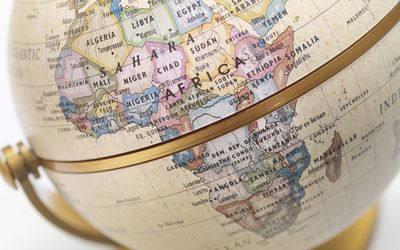
AFTER decades of poor economic performance, sub-Saharan Africa’s growth is taking off. In the International Monetary Fund’s (IMF’s) latest projections, the region will grow 5.1% this year and 5.8% next. Only Asia will grow faster.
Sub-Saharan Africa grew only 2.5% a year in the 1980s and 1990s. Growth jumped to 5.5% in 2002 and, if the IMF forecasts are accurate, annual growth from 2002-19 will have bettered 5% every year bar two.
Sub-Saharan Africa’s performance stands in stark contrast to sluggish growth in developed countries. As a result, investors are looking at Africa with new enthusiasm. Foreign firms are investing in factories, infrastructure and property across the continent and pension funds are looking for ways to invest in African-based companies.
Some have questioned whether Africa’s faster growth is sustainable. How much of the improved performance since 2002 was merely due to booming commodity prices? In this view, higher prices for Africa’s exports and the resultant investment in new mines and oil production have driven Africa’s growth. When commodity prices weaken, Africa’s inherent weaknesses will be revealed.
To test whether this higher growth is sustainable, Rhodes University graduate student Sibongile Zulu compared the drivers of its growth with those identified in the World Bank’s 2008 Growth Report as necessary for sustained, rapid growth. The Growth Report examined 13 economies that maintained growth of more than 7% a year for more than 30 years after the Second World War and suggested they shared five characteristics.
The fast-growing economies were all outwardly oriented — they exported to large global markets and imported what they needed. They maintained macroeconomic stability — inflation and budget deficits were relatively low. In all the economies, investment exceeded 25% of gross domestic product (GDP) and was funded by savings at a similar level. No example of a sustained high investment path was not backed up by high domestic savings.
Finally, successful countries let markets allocate resources and all had committed, credible and capable governments.
To what extent are these conditions met in Africa? Zulu examined 29 of its largest economies (excluding SA) and found faster growth since 2002 had been accompanied by increased openness to trade, lower inflation and lower budget deficits. The requirements identified by the Growth Report were therefore all met. Investment had risen to more than 24% of GDP, just below the 25% the report suggests was necessary for sustained rapid growth. This bodes well for the future sustainability of growth. Africa’s growth is not being driven by unsustainable increases in consumption but by investment in infrastructure, factories and mines.
Measuring how well markets allocate resources and the commitment and credibility of governments is more difficult. For those countries for which data are available, Africa’s performance has improved in terms of measures such as the World Economic Forum’s global competitiveness index.
The principal weakness, Zulu finds, is that Africa’s savings have lagged well below the increase in investment. More than one-third of Africa’s investment is funded by foreign investment inflows or foreign loans. Such funds have been readily obtainable because of low global interest rates and high liquidity generated by expansionary monetary policy in the developed countries. But should such funds dry up, Africa’s ability to sustain high levels of investment may be threatened. Some evidence from Asian economies show that higher savings follow higher growth. This may yet be the case in Africa, but savings patterns should be carefully monitored to see whether faster growth will be sustainable.
A worry for the future is that commodity prices are falling while inequality is rising. Falling commodity prices could put pressure on Africa’s exports and reduce inflows of direct investment. Rising inequality could lead to social unrest. Policies must, as they did in Asia, simultaneously promote growth and reduce inequality. Rapid increases in productive employment are important for this outcome to be achieved.
Perhaps the most striking thing about Africa’s improved growth is it has occurred despite woeful growth of the region’s second-largest economy, SA. The IMF expects SA to grow only 1.4% this year and 2.3% next. SA’s policy makers often blame our low growth on poor global economic circumstances. But rapid growth in the rest of Africa shows this cannot be true. The IMF expects that only four sub-Saharan African countries will grow slower than SA. It expects our future growth to be a sluggish 2.7% by 2019.
Instead of blaming our low growth on external forces, we need to face up to the truth that our economic weakness is of our own making. We would do well to look to the rest of Africa for what we should be doing.
Keeton is with the economics department at Rhodes University.
Article by: Gavin Keeton
Article Source: Business Day
